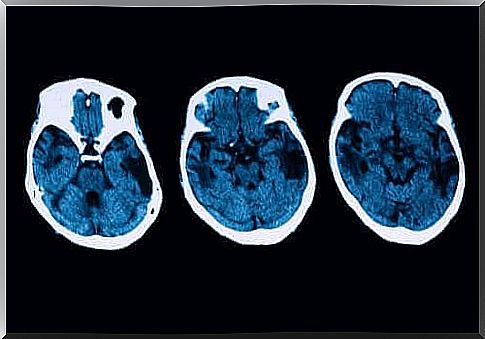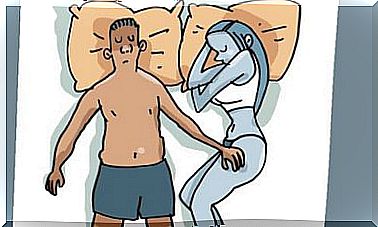Posterior Cortical Atrophy – Diagnosis And Treatment

Posterior cortical atrophy is a neurodegenerative disorder that affects vision. One can either lose it completely or only partially. Memory loss is also a fairly common symptom. In today’s article , we will take a closer look at this disorder, in addition to showing you how to detect it early.
Some studies suggest that this disorder is often not diagnosed as early as it should. The reason is that because it causes vision-related symptoms, people often consult an ophthalmologist instead of a neurologist.
Because of this, we believe it is important for you to be able to identify the symptoms that may alert you to the presence of posterior cortical atrophy. Let’s look at some of the signs you should not overlook.
The phases of posterior cortical atrophy

Medical studies reveal a number of phases of posterior cortical atrophy. Ideally , these symptoms should be discussed with a neurologist as soon as possible, in order to speed up treatment.
- Gradual and slow visual impairment: You may see shadows or periodically lose your vision completely. This happens so progressively and slowly that it is not detected until it has become much worse.
- Absence of ophthalmic pathology: If a person goes to the ophthalmologist, the doctor will not be able to identify the disease that leads to loss of vision. Therefore, those who suffer from it will continue to live a normal life, until their symptoms worsen.
- Small memory losses: When the disturbance worsens, there will be small memory losses that some will consider normal. However, as the disease progresses, this will worsen.
- Early stage of dementia: A person with this condition will show signs of hypermetabolism and hyperperfusion, which can be detected thanks to a test involving a neuroimaging study. However, be aware that dementia occurs when the disease is at a fairly advanced stage.
Diagnosis
As you can see, the symptoms of posterior cortical atrophy are very slow but progressive. Therefore, when a person goes to a neurologist, it may be too late.
So if you notice changes in your vision, in addition to occasional memory loss, do not hesitate to contact a professional.
The first test to diagnose posterior cortical atrophy is a blood test. One will be able to detect vitamin deficiency and other findings through it. Afterwards, a doctor will perform a more complete ophthalmological examination.
However, diagnostic tests do not end there. To remove doubt, one will also perform other neurological tests such as MRI and tomographs. If all indications are that you may have posterior cortical atrophy, there are various treatments to choose from.
Treatment of posterior cortical atrophy

Once you have a positive diagnosis for posterior cortical atrophy, there are two possible treatments you can follow. Be aware, however, that none of them will cure the disorder. This is because it is a degenerative disease.
- The first treatment involves the use of medication to treat symptoms that may occur due to this disorder. The medication reduces anxiety and improves depression, if this is a problem.
- A person can undergo cognitive therapy to preserve the skills that are not damaged, as well as to delay their loss. They may also undergo physiotherapy, which will help improve these circumstances.
These two treatment options focus mainly on improving a person’s quality of life, and only treat their symptoms. The goal here is to delay the deterioration of their abilities and skills, thus improving the anxiety and depression that can come with this disease.
If in doubt, talk to your doctor
We wanted to make you aware of the symptoms of posterior cortical atrophy in this article. That way, you can recognize the first symptoms so you can see your doctor as soon as possible.
As we mentioned earlier, an early diagnosis will make a big difference. Do not be afraid: there is help for you.









